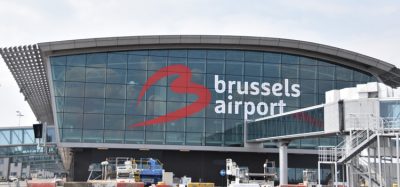Share or fail! Leveraging resources between agencies
Posted: 7 February 2009 | John Michael Anderson, Chairman, ARFF Working Group | No comments yet
The need today is share everything or do without! Governments are making significant cuts in every area and the task before every emergency response agency is to do your job without any extra funds. That sounds easy! Failure is an option for any organisation, but if you work within your mission statements, share resources with outside agencies that have a common goal with your own, and gain involvement from everyone, then you have a chance of survival.
The need today is share everything or do without! Governments are making significant cuts in every area and the task before every emergency response agency is to do your job without any extra funds. That sounds easy! Failure is an option for any organisation, but if you work within your mission statements, share resources with outside agencies that have a common goal with your own, and gain involvement from everyone, then you have a chance of survival.
The purpose of this article is to introduce you to a training situation between government agencies that has resulted in success on more than one occasion. I would like to tell you how relationships built on honour and integrity allow for the firefighters to save a life.
There is a huge economic crisis that has required cuts in almost every area of government and this does not exclude airports. Rising fuel costs have tapped airport budgets and all organisations are being asked to cut back and offer reduced services. With these bleak statements there is a loud voice of reason that requires true leadership; airport fire chiefs must clearly define legitimate capabilities, share resources with other local entities, and cause employees to be more creative.
Join our free webinar: Revolutionising India’s travel experience through the Digi Yatra biometric programme.
Air travel is booming, and airports worldwide need to move passengers faster and more efficiently. Join the Digi Yatra Foundation and IDEMIA to discover how this groundbreaking initiative has already enabled over 60 million seamless domestic journeys using biometric identity management.
Date: 16 Dec | Time: 09:00 GMT
rEGISTER NOW TO SECURE YOUR SPOT
Can’t attend live? No worries – register to receive the recording post-event.
This article will focus on the City of Pensacola’s airport, but there are many organisations just like this one that will have many of the same concerns. The key is to work together to prepare for the unthinkable and train as you would respond. That is a key issue, if you are counting on another group for assistance you must meet with them and have a sound plan, a sound plan that is understood by all and is realistic. But if you don’t train together then setting the expectation of working on-scene together is a mistake. And make no mistake; it is a great deal of hard work preparing a multi-agency response.
Make a clear objective that is meaningful and other agencies can and will support you. Ours was to train a large group of structural firefighters to be proficient in aviation fire fighting. The first step was to seek out professional contacts to see what other organisations of the same size and type of aircraft were doing, so I went to the ARFF Working Group and the Department of Defense (United States Air Force & United States Navy). There I found some professionals that possessed both the ability to perform and the courage to act, people like Tom Ryan, the training officer from Eglin Air Force Base and Glen Greenough from Gulf Coast Fire & Emergency Services on board the Pensacola Naval Air Station. I knew I was in good company.
After meeting with all of the agencies in my local area we immediately reviewed the Airport Emergency Plan (AEP) and ensured that all mutual aid providers were listed and included in all future meetings. The preliminary training sessions included a table top with introductions from all attendees. This prevented the most common problem that all agencies encounter at the scene of a crisis, “Who Are You?” It is imperative that all agencies have a familiarity with each other prior to the assembly of an Incident Management Command Center. From this the real work could begin.
What this team of fire leaders was trying to achieve was a system where multiple fire service organisations would arrive at the scene of a large aviation incident, share resources, and mitigate the event with a positive outcome. Sounds easy right? We began by agreeing that all personnel that would be on the ground doing the heavy lifting already possessed the necessary skills, such as handling hose lines, wearing self-contained breathing apparatus, and gaining access to the critical areas. It was time to fight some simulated aviation fires.
So here we were, representatives from the United States Air Force, the United States Navy, and the City of Pensacola, in place with one clear objective: “Knock down the exterior fires with the turrets from the initial arriving crash trucks, create and maintain an egress path, and assist the passengers from the interior of the aircraft to a safe area outside the area deemed IDLH.” The instructors were from the Navy, evaluators were from the United States Air Force, and the combat firefighters were from the City of Pensacola Fire Department.
The simulated fires were to be provided by an Aircraft Mock-up that burns propane. The capability of this sophisticated training aid was the ability to provide over a dozen different fires. Every member was well briefed as to the expectations of the exercises, as well as tasking the company level leaders to step up and be fire team leaders. But involvement from the executive directors of government agencies is a critical element that must be addressed. They hold the key to all funding and without their support a multi-agency training event will never prepare agencies to work in a mutual aid environment.
Airport Operations officers working with ARFF officers at the scene of an aircraft crash was the training environment we simulated. The Crash Apparatus was in place and used as the primary supplier of extinguishing agents, but the structural response units held a key role in deploying hand lines and facilitating the passenger egress. This training offered the opportunity for all ARFF drivers to approach an aircraft mockup and deploy extinguishing agent through the roof and the bumper turrets and maintain a rescue path for the passengers that are being guided and assisted by the aircraft flight attendants. The weak link in this common emergency response plan is the time it takes for the support units to arrive and begin to do useful work: that is to assist and not impede the self-rescue of the passengers and maintaining the AFFF Foam Blanket that is used to maintain a path for the passengers to travel through to a safe area.
When you set up this type of training, begin at the beginning, keep simulating to a minimum. If your people cannot position their apparatus during these exercises then they will fail in the actual response. All personnel must be protected by both full protective clothing and a Self-Contain Breathing Apparatus. The simple tasks must be evaluated critically and the desired result critiqued. If the team leaders do not set the acceptable limits then when your responders fall short, their effort becomes the standard. Train like you Fight! And what you tell your responders in this training environment they will recall when they are faced with the real thing, “When faced with insurmountable odds….people do not rise to the occasion, but rather they fall back to their highest level of training.”
When the training is completed and all apparatus are back in their assigned quarters, the final analysis is conducted. This is where you explain the accomplishments to the greater good. Senior leadership such as Airport Directors, Fire Chiefs, City Officials and Government Executives all have a job to do. We as leaders of emergency response forces must come together and share our resources and talent for the good of the whole. But how do we convey to senior leadership that this is a good endeavor?
The reason to conduct any large scale training event is to prepare for a large accident, where the expectations are that many organisations will arrive on scene and immediately begin to do productive and useful work. Wrong! If you do not plan, schedule training events, develop your AEP, and conduct drills in real time, you will never know your true level of preparedness. But to get the buy in from the senior leaders, you must demonstrate three important elements that they understand: 1) Efficiency, (2) Effectiveness, (3) Save Money.
In our final out brief we illustrated that this was efficient by using our own emergency response equipment on our own airport property, surrounded by familiar sights while monitoring our airport frequencies. We did not have to pack gear bags or travel to a training site and use other hose lines and apparatus. The personnel attending the drills were in an on duty status, which means they had to depart their station house and travel to the airport just as they would for an actual event. They came off the fire apparatus with the intention of doing work, not just another training session.
Secondly, this was an effective drill because we extinguished an aviation based fire, while working in small teams with an incident commander and an operations officer. If you are having your drivers set up on the mock up and discharge agent to create a rescue path, if they are not doing a good job we can effectively have them do it until they can do so flawlessly. It is not just getting the skills, but rather the confidence that they can develop through hard work and adversity. These are elements that build up their attitude for both training and emergency response. As for the effectiveness of developing fire ground leaders, to have the units report at a given time to conduct joint training is a lesson in itself. The operations officer will learn quickly that orders must be clear, concise, and expectations made early. This training must place personnel in key positions with clear expectations and then honestly critique their performance.
And finally, the cost saving portion is the financial piece that is at the forefront of all decisions today. Senior leaders will be behind training and preparedness, but every entity within the larger organisation is also vying for financial backing. So what makes our request so important? We as training coordinators must have clear general directions and the authority to make decisions. We will get the training completed in a professional manner, that is what we do, but the other moving parts will strike us from behind. Overtime costs for training is an example. Because the personnel were on duty and did not have to travel to a neighbouring community on overtime to train, and the Navy and Air Force were not looking to earn money for providing this training, there was a huge saving garnered. The Gulf Coast Fire & Emergency Services agency used our training as an opportunity to train their instructors. Chief G. Greenough was evaluating and certifying their instructors at the same time our personnel were being trained. This was truly a joint training venture with a huge impact on both future training classes for the Navy and aviation emergency responses for the City fire fighters.
After the out brief and the representatives from the emergency response forces were bidding goodbye until the next training session next autumn, it was made clear that we don’t do this job for money. People that do this work are interested in efficiency, effectiveness, and the pleasure of knowing that we left this community better than we found it.
Join our free webinar: Revolutionising India’s travel experience through the Digi Yatra biometric programme.
Air travel is booming, and airports worldwide need to move passengers faster and more efficiently. Join the Digi Yatra Foundation and IDEMIA to discover how this groundbreaking initiative has already enabled over 60 million seamless domestic journeys using biometric identity management.
Date: 16 Dec | Time: 09:00 GMT
rEGISTER NOW TO SECURE YOUR SPOT
Can’t attend live? No worries – register to receive the recording post-event.

















